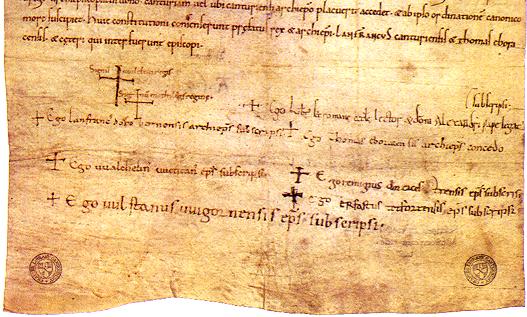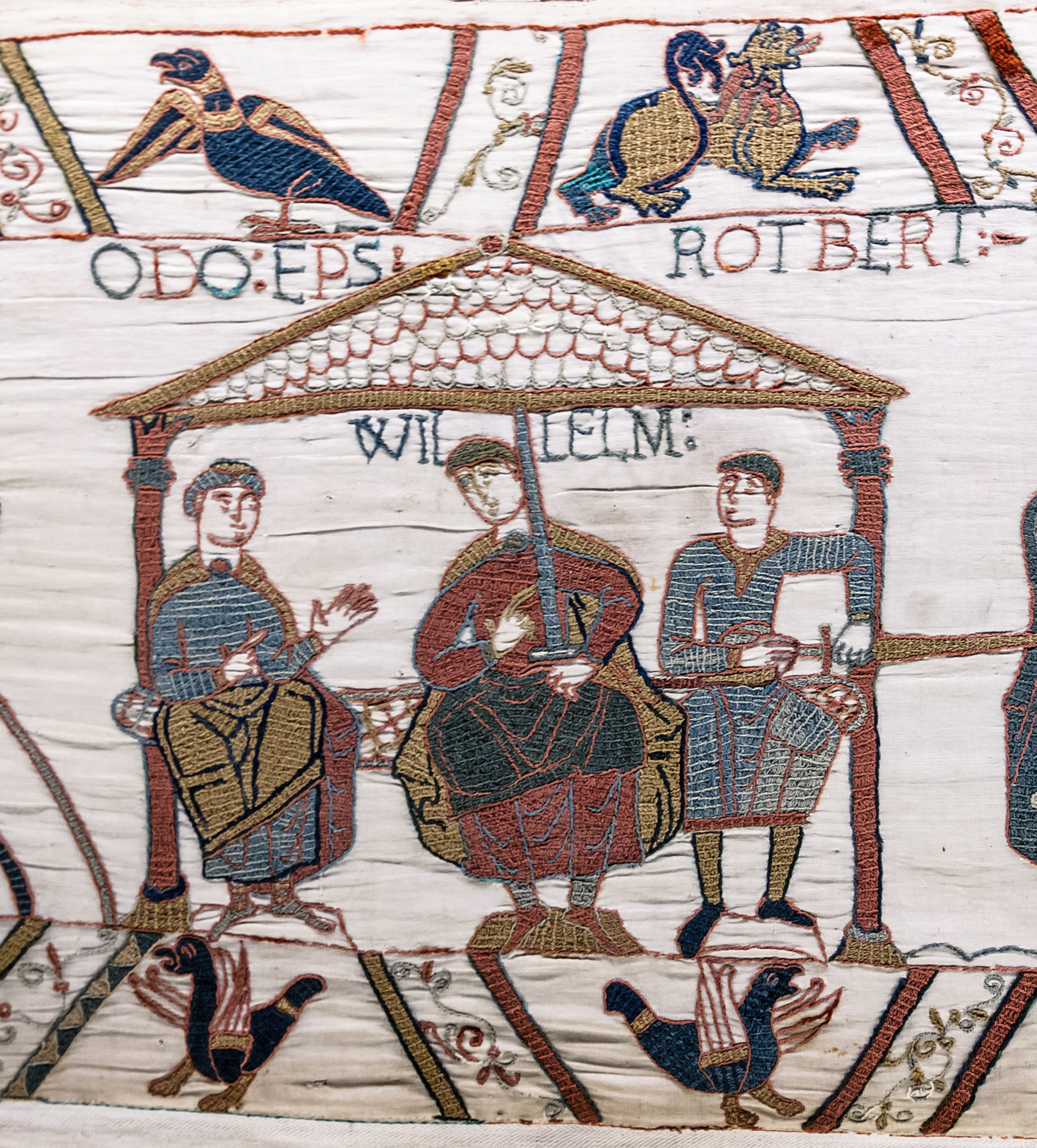|
Abbey Of Bec
Bec Abbey, formally the Abbey of Our Lady of Bec (), is a Benedictine monastic foundation in the Eure ''département'', in the Bec valley midway between the cities of Rouen and Bernay. It is located in Le Bec Hellouin, Normandy, France, and was the most influential abbey of the 12th-century Anglo- Norman kingdom. Like all abbeys, Bec maintained annals of the house but uniquely its first abbots also received individual biographies, brought together by the monk of Bec, Milo Crispin. Because of the abbey's cross-Channel influence, these hagiographic lives sometimes disclose historical information of more than local importance. Name The name of the abbey derives from the bec, or stream, that runs nearby. The word derives from the Scandinavian root, ''bekkr''. First foundation The abbey was founded in 1034 by Saint Herluin, whose life was written by Gilbert Crispin, Abbot of Westminster, formerly of Bec, and collated with three other lives by Milo Crispin. Abbey constructi ... [...More Info...] [...Related Items...] OR: [Wikipedia] [Google] [Baidu] |
Abbaye Du Bec - Façade Sud Vue Du Bec
An abbey is a type of monastery used by members of a religious order under the governance of an abbot or abbess. Abbeys provide a complex of buildings and land for religious activities, work, and housing of Christians, Christian monks and nuns. The concept of the abbey has developed over many centuries from the early monastic ways of religious men and women where they would live isolated from the lay community about them. Religious life in an abbey may be monastic. An abbey may be the home of an enclosed religious order or may be open to visitors. The layout of the church and associated buildings of an abbey often follows a set plan determined by the founding religious order. Abbeys are often self-sufficient while using any abundance of produce or skill to provide care to the poor and needy, refuge to the persecuted, or education to the young. Some abbeys offer accommodation to people who are seeking retreat (spiritual), spiritual retreat. There are many famous abbeys across ... [...More Info...] [...Related Items...] OR: [Wikipedia] [Google] [Baidu] |
Avranches
Avranches (; ) is a commune in the Manche department, and the region of Normandy, northwestern France. It is a subprefecture of the department. The inhabitants are called ''Avranchinais''. History Middle Ages By the end of the Roman period, the settlement of ''Ingena'', capital of the Abrincatui tribe, had taken the name of the tribe itself. This was the origin of the name ''Avranches''. In 511 the town became the seat of a diocese (suppressed in 1790) and subsequently of a major Romanesque cathedral dedicated to Saint Andrew, Avranches Cathedral, which was dismantled during the French revolutionary period. As the region of Brittany emerged from the Roman region of Armorica, Avranchin was briefly held by Alan I, King of Brittany as part of the Kingdom of Brittany at the turn of the 10th century. The regions that later became the Duchies of Normandy and Brittany each experienced devastating Viking raids, with Brittany occupied by Vikings from 907 to 937. In 933 Avranches and ... [...More Info...] [...Related Items...] OR: [Wikipedia] [Google] [Baidu] |
Lanfranc
Lanfranc, OSB (1005 1010 – 24 May 1089) was an Italian-born English churchman, monk and scholar. Born in Italy, he moved to Normandy to become a Benedictine monk at Bec. He served successively as prior of Bec Abbey and abbot of St Stephen's Abbey in Caen, Normandy and then as Archbishop of Canterbury in England, following its conquest by William the Conqueror. He is also variously known as (), (), and (). In his lifetime, he was regarded as the greatest theologian of his generation. Early life Lanfranc was born in the early years of the 11th century at Pavia, where later tradition held that his father, Hanbald, held a rank broadly equivalent to magistrate. He was orphaned at an early age. Lanfranc was trained in the liberal arts, at that time a field in which northern Italy was famous. There is little or no evidence to support the myth that his education included much in the way of Civil Law, and none that links him with Irnerius of Bologna as a pioneer in the re ... [...More Info...] [...Related Items...] OR: [Wikipedia] [Google] [Baidu] |
Adolphe-André Porée
Adolphe-André Porée, known as Chanoine Porée (14 March 1848, Bernay – 28 February 1939, Saint-Aubin-d'Écrosville), was a French archaeologist and historian. Originally from Beaumont-en-Auge, his father, Adolphe Porée, ran a dyeing factory in Bernay. A very religious individual, Porée embraced the priesthood at the age of twenty-three. In 1871, he became the curé of the collegiate church of Les Andelys. In 1875, he became the curé of Bournainville-Faverolles where he remained fifty-three years. Porée spent his nights studying archeology, with particular attention paid to the churches of Eure sold during the First Empire, local notables and the impact of the French Revolution. Porée, who also was the diocesan archivist, undertook, from 1890 to 1892, an archaeological expedition through France, Belgium, Germany, Switzerland and Italy. In 1882, he discovered, along with the abbé de La Balle and Gaston Le Breton, a lost statue by Pierre Puget on the old La Londe cas ... [...More Info...] [...Related Items...] OR: [Wikipedia] [Google] [Baidu] |
Commune In France
A () is a level of administrative division in the French Republic. French are analogous to civil townships and incorporated municipalities in Canada and the United States; ' in Germany; ' in Italy; ' in Spain; or civil parishes in the United Kingdom. are based on historical geographic communities or villages and are vested with significant powers to manage the populations and land of the geographic area covered. The are the fourth-level administrative divisions of France. vary widely in size and area, from large sprawling cities with millions of inhabitants like Paris, to small hamlets with only a handful of inhabitants. typically are based on pre-existing villages and facilitate local governance. All have names, but not all named geographic areas or groups of people residing together are ( or ), the difference residing in the lack of administrative powers. Except for the municipal arrondissements of its largest cities, the are the lowest level of administrative d ... [...More Info...] [...Related Items...] OR: [Wikipedia] [Google] [Baidu] |
Gilbert, Count Of Brionne
Gilbert (or Giselbert) de Brionne, Count of Eu and of Brionne ( – ), was an influential nobleman in the Duchy of Normandy in Northern France.Deck, S. (1954). Le comté d'Eu sous les ducs. In Annales de Normandie (Vol. 4, No. 2, pp. 99-116). Université de Caen. He was one of the early guardians of Duke William II in his minority, and a first cousin to William's father Duke Robert. Life Gilbert de Brionne was son of Geoffrey, Count of Eu (otherwise cited as 'Godfrey'), who was an illegitimate child of Richard I of Normandy.George Edward Cokayne, ''The Complete Peerage of England Scotland Ireland Great Britain and the United Kingdom, Extant Extinct or Dormant'', ed. Vicary Gibbs, Vol. IV (London: The St. Catherine Press, Ltd., 1916), p. 308 He inherited Brionne, becoming one of the most powerful landowners in Normandy. Gilbert was a generous benefactor to Bec Abbey founded by his former knight Herluin in 1031. When Robert I died in 1035, his illegitimate son William i ... [...More Info...] [...Related Items...] OR: [Wikipedia] [Google] [Baidu] |
Normans
The Normans (Norman language, Norman: ''Normaunds''; ; ) were a population arising in the medieval Duchy of Normandy from the intermingling between Norsemen, Norse Viking settlers and locals of West Francia. The Norse settlements in West Francia followed a series of raids on the French northern coast mainly from what is now Denmark, although some also sailed from Norway and Sweden. These settlements were finally legitimized when Rollo, a Scandinavian Vikings, Viking leader, agreed to swear fealty to Charles the Simple, King Charles III of West Francia following the Siege of Chartres (911), siege of Chartres in 911, leading to the formation of the ''County of Rouen''. This new fief, through kinship in the decades to come, would expand into what came to be known as the ''Duchy of Normandy''. The Norse settlers, whom the region as well as its inhabitants were named after, adopted the language, Christianity, religion, culture, social customs and military, martial doctrine of the Wes ... [...More Info...] [...Related Items...] OR: [Wikipedia] [Google] [Baidu] |
Abbot Of Westminster
The Abbot of Westminster was the head (abbot) of Westminster Abbey. The position of Abbot of Westminster was a significant role in English history, with the abbots overseeing Westminster Abbey from its early days as a Benedictine monastery through major transformations over the centuries. List of Abbots References {{reflist Abbots of Westminster, * Lists of abbots, Westminster City of Westminster-related lists, Abbots ... [...More Info...] [...Related Items...] OR: [Wikipedia] [Google] [Baidu] |
Gilbert Crispin
Gilbert Crispin ( 1055 – 1117) was a Christian author and Anglo-Norman monk, appointed by Archbishop Lanfranc in 1085 to be the abbot, proctor and servant of Westminster Abbey, England. Gilbert became the third Norman Abbot of Westminster to be appointed after the Norman Conquest, succeeding Abbot Vitalis of Bernay. Biography He was probably the grandson of Gislebert Crispin, Baron of Bec, although the Crispin line is notoriously convoluted and uncertain. His father may have been William Crispin, and his mother Eve the daughter of Simon de Montfort l'Aumary. He was closely related to Robert Crispin (Latin ''Ro(d)bertus Crispinus'') a Norman mercenary who died in 1073. Gilbert was a young monk under Saint Anselm at the Abbey of Bec, Normandy. There Gilbert was said to have: ''"become a perfect scholar in all the liberal arts"''. In 1093 Anselm became Archbishop of Canterbury. Gilbert promoted Anselm's arguments in his disputes with King Henry I of England. Gilbert was proba ... [...More Info...] [...Related Items...] OR: [Wikipedia] [Google] [Baidu] |
Robert Of Mortain
Robert, Count of Mortain, first Earl of Cornwall of 2nd creation (–) was a Norman nobleman and the half-brother (on their mother's side) of King William the Conqueror. He was one of the very few proven companions of William the Conqueror at the Battle of Hastings and as recorded in the Domesday Book of 1086 was one of the greatest landholders in his half-brother's new Kingdom of England. Life Robert was the son of Herluin de Conteville and Herleva of Falaise and brother of Odo of Bayeux.Detlev Schwennicke, ''Europäische Stammtafeln: Stammtafeln zur Geschichte der Europäischen Staaten'', Neue Folge, Band III Teilband 4 (Marburg, Germany: Verlag von J. A. Stargardt, 1989), Tafel 694B Robert was born in Normandy, a half-brother of William the Conqueror. and was probably not more than a year or so younger than his brother Odo, born . About 1035, Herluin, as Vicomte of Conteville, along with his wife Herleva and Robert, founded Grestain Abbey. Count of Mortain Around 1049 hi ... [...More Info...] [...Related Items...] OR: [Wikipedia] [Google] [Baidu] |





